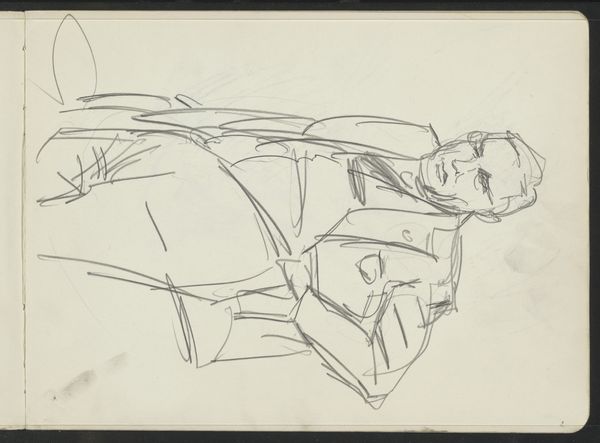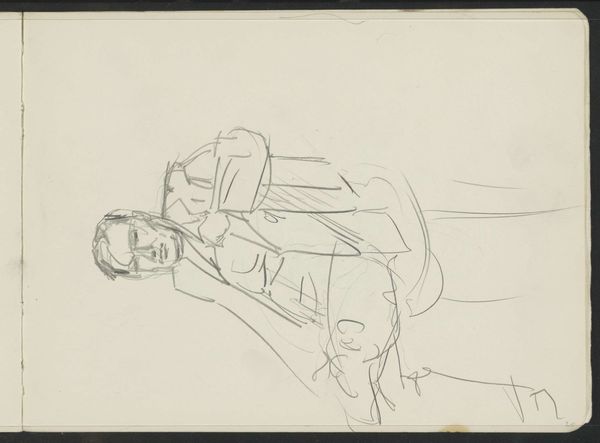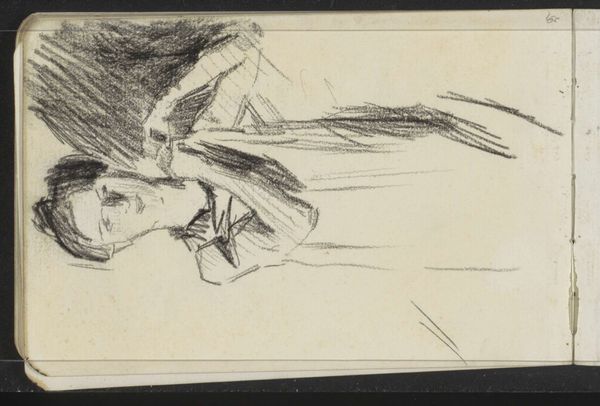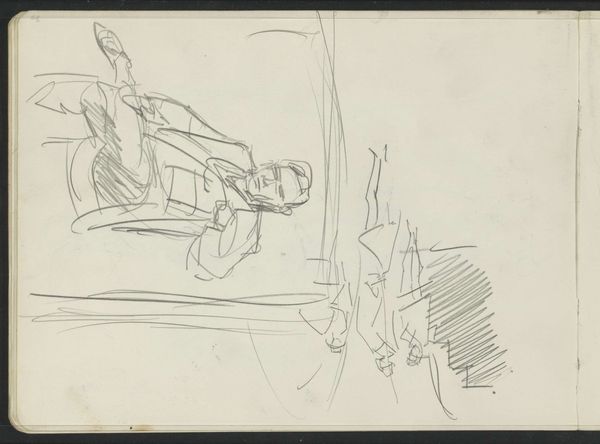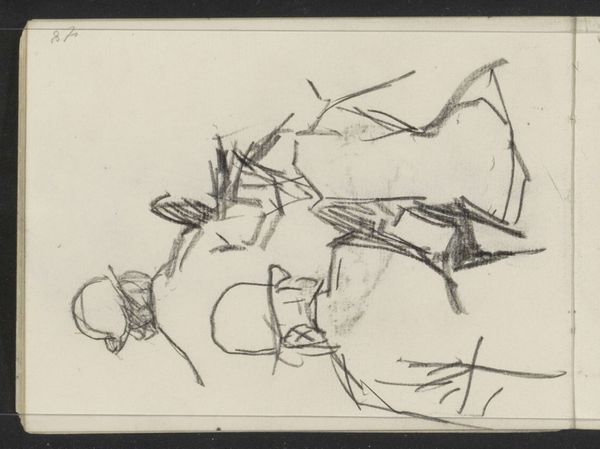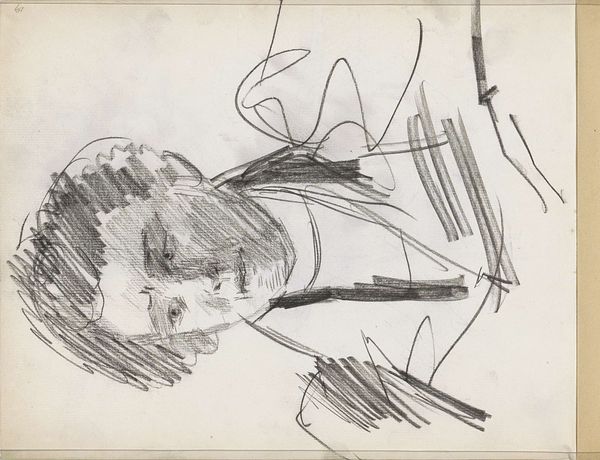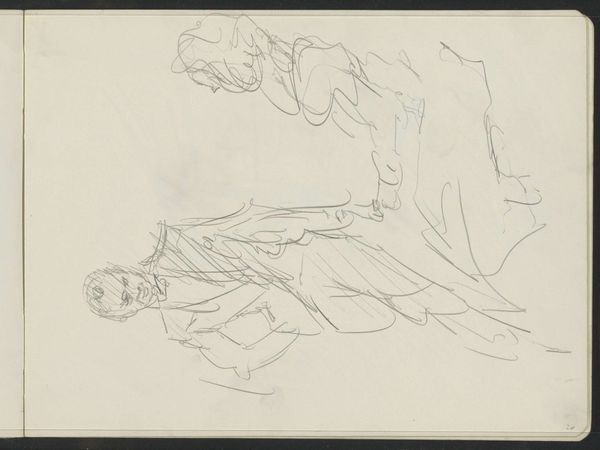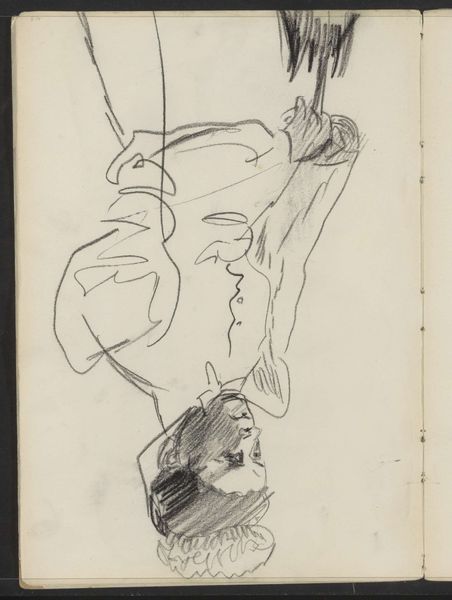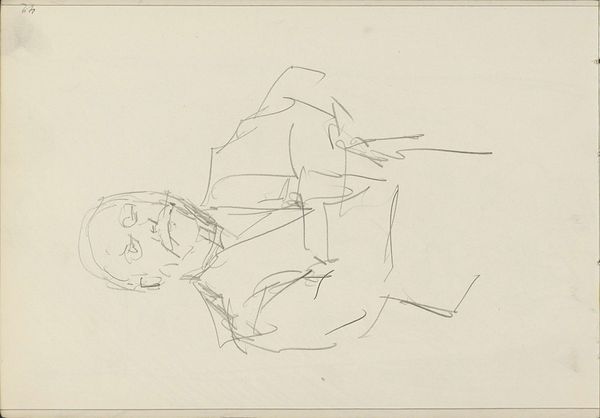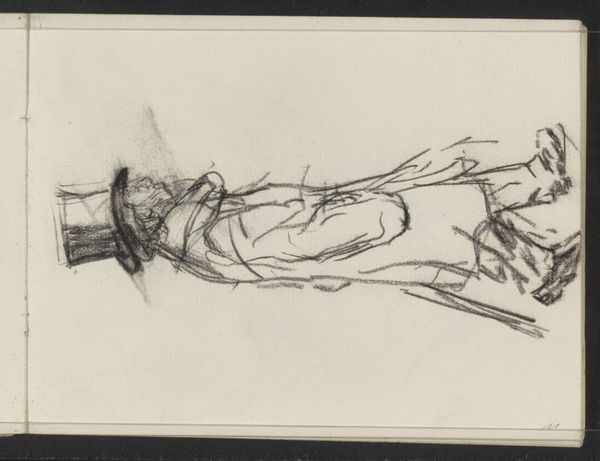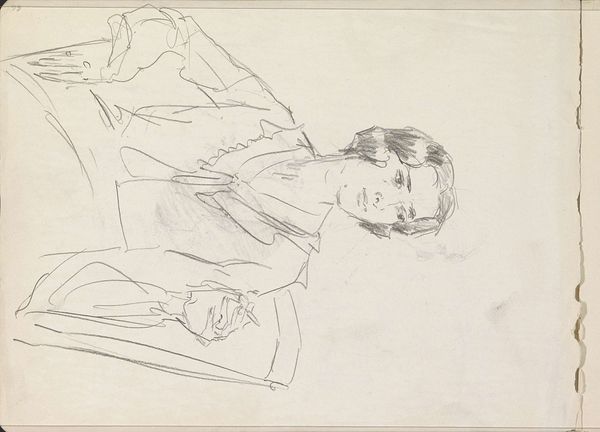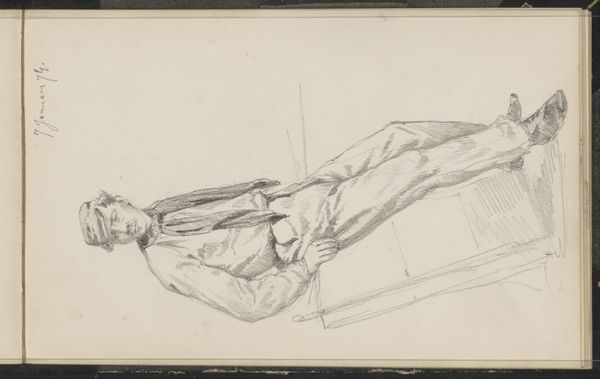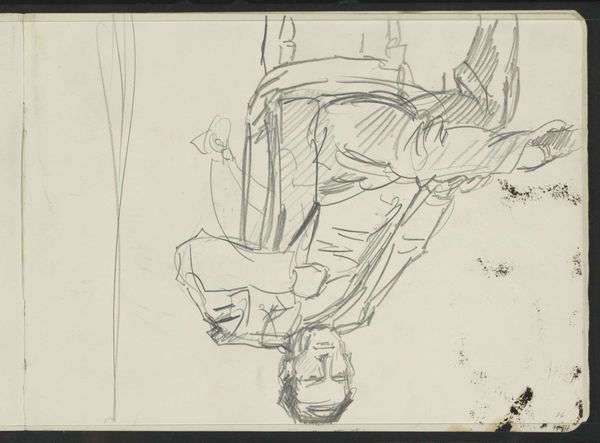
Copyright: Rijks Museum: Open Domain
Editor: Here we have Isaac Israels’s “Portret van een onbekende man,” a pencil and pen drawing from around 1915 to 1925, at the Rijksmuseum. It has a very raw, almost unfinished feel to it, especially with the visible sketchbook page and the layering of lines. What can you tell me about this work? Curator: The sketch, precisely because it showcases its own making, offers valuable insights into artistic production. Consider the mass-produced paper, the readily available pencil and pen: these were tools shaping not just individual expression but access to artistic creation itself. Editor: So you're saying the accessibility of the materials changes the work's significance? Curator: Absolutely. How does the democratization of art supplies—pencils versus, say, expensive oil paints—affect who can create art and whose vision gets represented? This also challenges the traditional art hierarchy: is a quickly sketched portrait less valuable because of the perceived "lack" of labor compared to a meticulously painted one? Editor: That’s a really interesting point. I hadn't thought about the economic side of the artistic process and how readily available tools could broaden artistic participation. Curator: Precisely. The work becomes an artifact of a particular socio-economic context, revealing the interplay between materials, labor, and access within the art world. It shifts our focus from the finished product to the very conditions that made its production possible. Editor: It's a different way to think about art. I often focus on symbolism or aesthetics, but this emphasizes the importance of the everyday context. I appreciate learning how material conditions influence artistic choices. Curator: And how those choices in turn influence broader social conversations around art making. A simple sketch opens up to a larger consideration of art, labor and consumption.
Comments
No comments
Be the first to comment and join the conversation on the ultimate creative platform.

